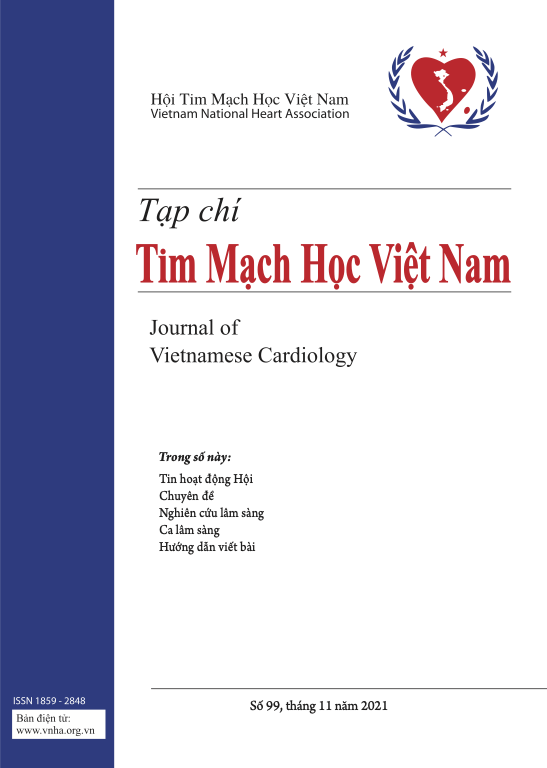Tìm hiểu đặc điểm một số biến chứng cơ học trong can thiệp động mạch vành qua da
Tóm tắt
Tìm hiểu đặc điểm một số biến chứng cơ học trong can thiệp động mạch vành qua daTài liệu tham khảo
1. Phạm Gia Khải và cộng sự (2005), Tình hình can thiệp tim mạch tại Viện Tim mạch Trung ương từ năm 1996 -2005.
![]()
2. Nguyễn Quốc Thái, Trần văn dương, Nguyễn Quang Tuấn (2001), “Bước đầu đánh giá kết quả phương pháp nong động mạch vành bằng bóng và đặt Stent điều trị bệnh động mạch vành tại Viện Tim mạch Việt Nam”, Kỷ yếu toàn văn Hội nghị Tim mạch miền Trung mở rộng lần thứ nhất, tr. 56-66.
![]()
3. ACCF/AHA/SCAI Guidelines for Percutaneous Coronary Intervention (2011), “A report of the American College of Cardiology Foundation/American Heart Association. Task Force on Pratice Guidelines and the Society for Cardiovascular Angiography and interventions”, J. Am. Coll. Cardiol., 58(24), pp. 2550-2583.
![]()
4. Maciej Leciak .Stent loss, guidewire entrapment, perforation.Departent of cardiology, University Hospital in Poznan.
![]()
5. Emmanouil S. brilakis Md1,*, Patricia J.M. et al (2005), “incidence, retrieval methods, and outcomes of stent loss during percutaneous coronary intervention: A large single-center experience”, Article first published online: 2.
![]()
6. S G Ellis, S Ajluni, A Z Arnold, J J Popma, et al, “increased coronary perforation in the new device era. incidence, classification management, and outcome”.
![]()
7. Z. Rahman, M. Ullah, A.K. Choudhury (2011), “Coronary Artery Dissection and Perforation Complicating Percutaneous Coronary intervention - A Review”, Cardiovasc. J., 3(2), pp. 239-247.
![]()
8. Agha Fahad Jan, Sultana Habib, Tahir Saghir, Khalid Naseeb, “Guider induced Coronary Dissection With Retrograde Extension To Aorta”. Pakistan heart Jounal 2010.
![]()
9. Francois Schiele, Nicolas Meneveau (2007), “Coronary Perforation: incidence, Predictive Factors, Management, and Prevention”, Handbook of Complications during Percutaneous Coronary interventions, pp. 111-122
![]()
10. Lloyd W. Klein (2006), “Coronary Artery Perforation During interventional Procedures”, Catheterization and Cardiovascular interventions, 68, pp. 713-717.
![]()
11. Ajluni S.C., Glazier S. et al. (1994), “Perforations after percutaneous coronary interventions: clinical, angiographic, and therapeutic observations”, Cathet. Cardiovasc. Diagn., 32, pp. 206-212.
![]()
12. Z. Rahman, M. Ullah, A.K. Choudhury (2011), “Coronary Artery Dissection and Perforation Complicating Percutaneous Coronary intervention - A Review”, Cardiovasc. J., 3(2), pp. 239-247.
![]()
13. Francois Schiele, Nicolas Meneveau (2007), “Coronary Perforation: incidence, Predictive Factors, Management, and Prevention”, Handbook of Complications during Percutaneous Coronary interventions, pp. 111-122
![]()
14. Guiseppe G.L, biondi-Zoccai (2006), “incidence, predictors and outcome of coronary dissection left untreated after drug-eluting stent immplantation”, European Heart Journal, 27, pp. 540–546.
![]()








